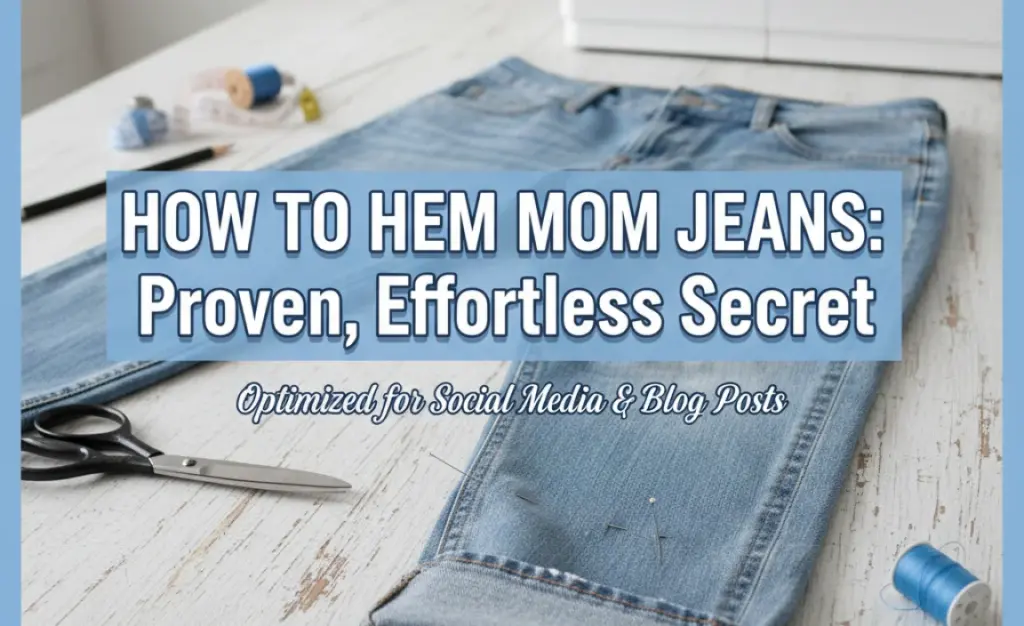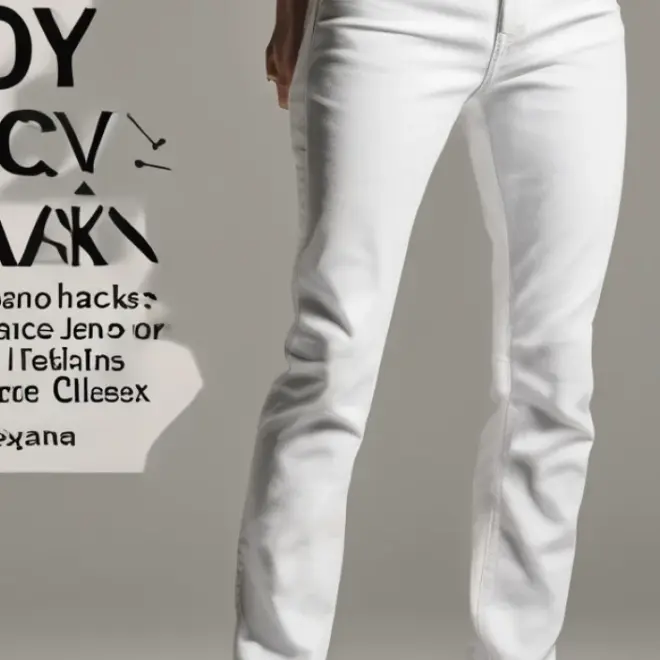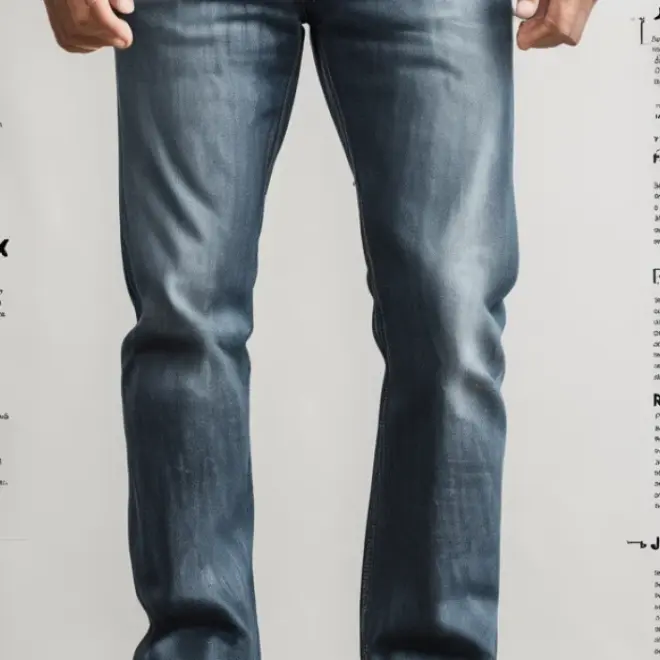Quick Summary
Learn how to hem mom jeans effortlessly! Discover the “dish soap secret” for a clean, no-sew finish in minutes. Get that perfect, custom fit without a sewing machine, perfect for beginners.
Mom jeans. We all love them: the classic high waist, the relaxed fit, the instant cool factor. But what happens when they’re just a little too long? That awkward pooling at the ankle can ruin the silhouette and make your favorite pair look sloppy. You want that perfect cropped length, but the thought of sewing seems daunting, right? Don’t worry. There’s an incredibly simple, almost magical way to get a quick, neat hem on your mom jeans without a single stitch. It’s an effortless secret that will have you tailoring your denim like a pro in no time.
Why Hemming Your Mom Jeans Matters

Denim is a wardrobe staple, and mom jeans have made a significant comeback for good reason. Their comfortable, relaxed fit and flattering high waist are universally appealing. However, off-the-rack denim rarely fits perfectly, especially in length. For petite frames, or even just for a specific style you’re aiming for, a significant amount of excess fabric at the bottom can be a common issue. A hem that’s too long can make your legs look shorter and your outfit feel unbalanced. Conversely, the right hemline can elevate your entire look, making your jeans appear custom-made and perfectly suited to your body and your shoes. Mastering this simple alteration means you can buy jeans with confidence, knowing you can easily adjust them to suit your needs.
The “Dish Soap” Secret: Your No-Sew Hemming Hack
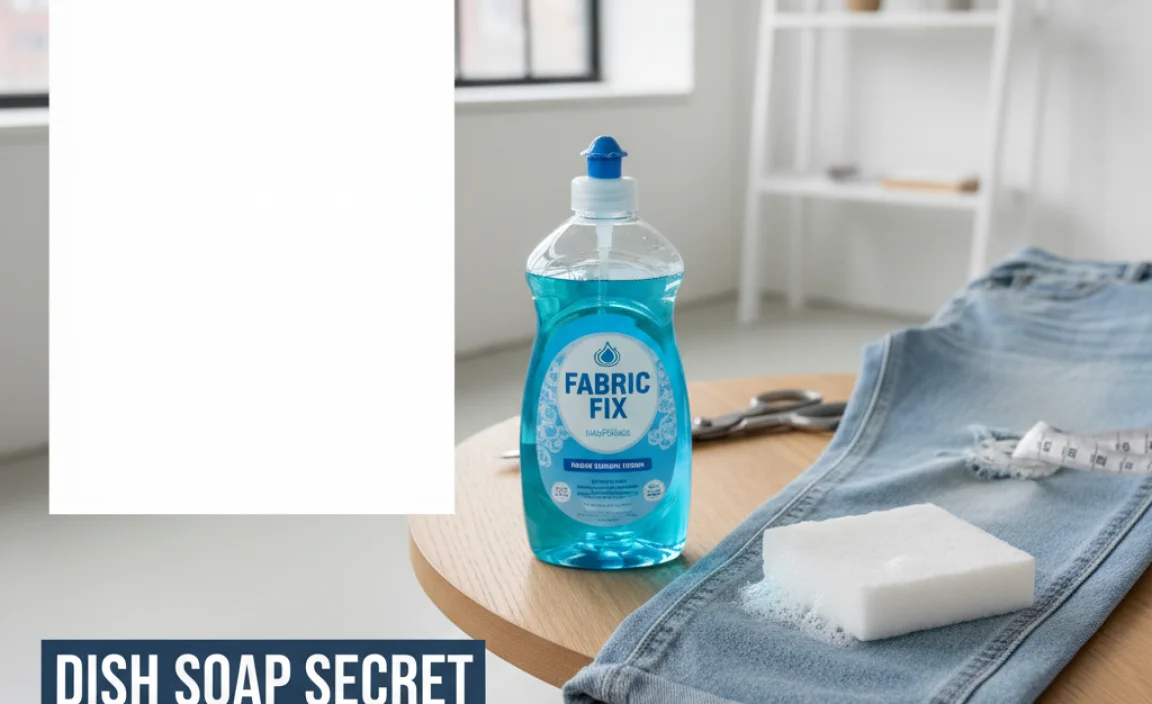
You might be wondering about the “dish soap” in the title – it sounds unusual, doesn’t it? This simple household item is the key to our no-sew hemming method. It acts as a temporary fabric softener and guide, allowing you to create a clean fold and a surprisingly durable hem with just scissors and an iron. This technique is perfect for casual denim like mom jeans, where a slightly imperfect or lived-in look is part of the charm. It’s accessible, requires minimal supplies, and delivers quick, satisfying results.
Gather Your Supplies
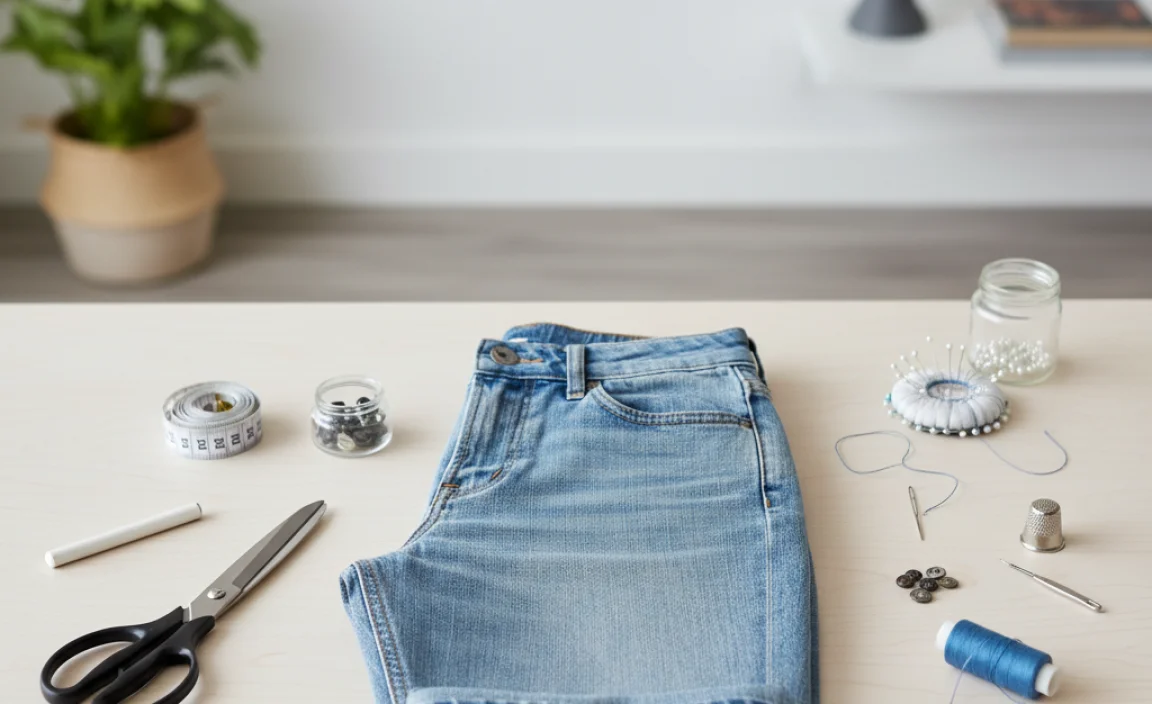
Before we dive into the steps, let’s make sure you have everything you need. The beauty of this method is its simplicity. You likely already own most of these items. Having them ready will make the process smooth and efficient.
Essential Tools for No-Sew Hemming:
- Your mom jeans that need hemming
- Sharp fabric scissors
- A pair of measuring tape or a ruler
- Fabric chalk or a washable marker
- A washcloth or sponge
- A small bowl
- Mild dish soap (like Dawn or a similar clear, basic liquid soap)
- An iron and ironing board
- Optional: A seam ripper (if you plan to remove existing hems for a cleaner look, though not strictly necessary for this method)
Step-by-Step: How to Hem Mom Jeans with Dish Soap
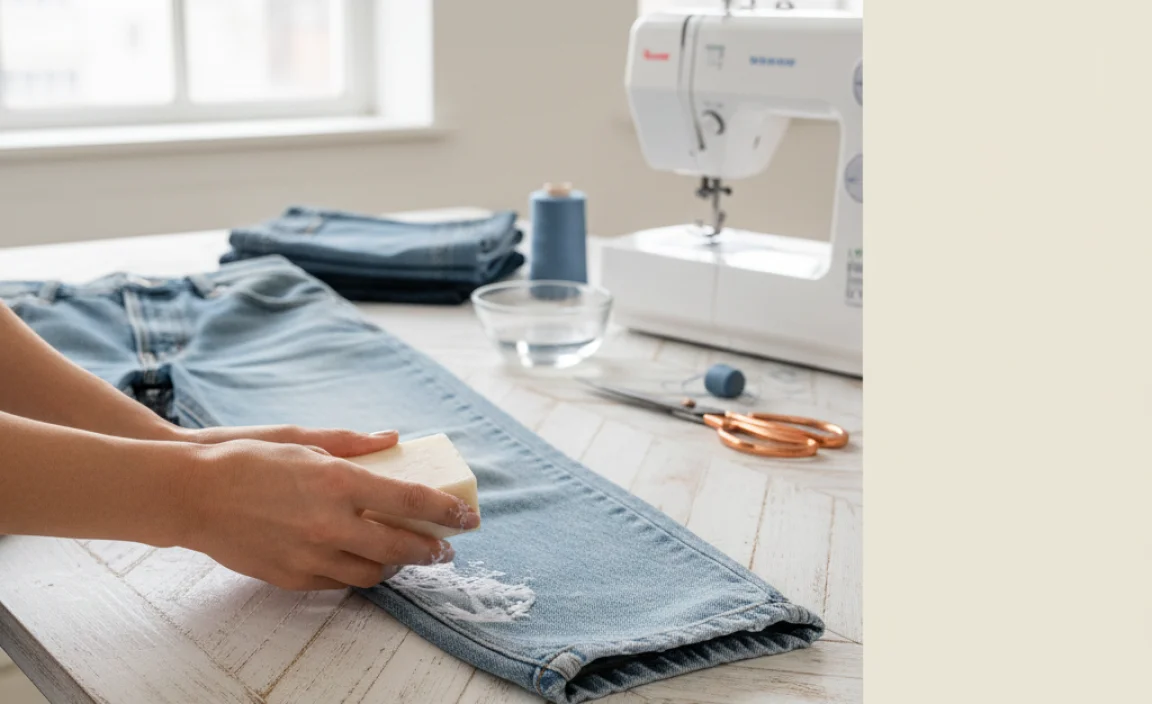
Let’s get your mom jeans fitting perfectly! This process is straightforward and forgiving. Take your time, follow the steps, and you’ll be impressed with the results.
Step 1: Determine Your Desired Length
First, try on your mom jeans and decide exactly where you want the hem to fall. It’s helpful to wear the shoes you’ll most likely wear with these jeans to get the most accurate measurement. Stand in front of a mirror. You can use a piece of tape or have a friend hold them at the desired length while you check the look and proportion.
Step 2: Mark Your Hemline
Once you’ve decided on the length, mark it. If you’re leaving the original hem intact (giving you a more casual, frayed edge look), you’ll be marking the finished length. If you want a super clean, classic hem, you might decide to remove the original hem first with a seam ripper. For this easy dish soap method, we’ll assume you’re creating a new folded hem above the original hem or carefully folding over the existing hem later.
Use your fabric chalk or washable marker to make a small dot at one of the inseams at your desired finished length. Repeat this on the outseam. Then, connect these dots with a smooth line. Measure this line and transfer it accurately to the other leg. Consistency is key for a professional look.
Step 3: Prepare the Dish Soap Solution
Here comes the secret ingredient! In your small bowl, mix a small amount of dish soap with water. You don’t need much – just enough to create a slightly sudsy mixture. Aim for a consistency where it’s diluted but still has some soapiness. Too much soap can leave residue. A ratio of about 1 part dish soap to 4 parts water is usually a good starting point. The EPA recommends using milder cleaning products, and this simple dish soap solution fits that bill.
Step 4: Apply the Solution and Measure the Fold
Dip your washcloth or sponge into the dish soap solution and wring it out so it’s damp, not soaking. Gently run the damp cloth along the marked hemline and about 1-1.5 inches above it. The dampness will slightly stiffen the fabric and make it easier to create a crisp fold. This is where the dish soap helps – it temporarily breaks down the fabric’s stiffness, allowing for a cleaner crease when you iron.
Now, measure from your marked finished hemline upwards. This is the amount of fabric you need to fold. For a clean, double-folded hem (which is more durable and looks more polished), you’ll want to fold up about 1 inch, then fold that 1-inch section up again. For a simpler, single fold, just fold up the amount needed to reach your desired length. For mom jeans, aiming for about 1 to 1.5 inches total fold-up is usually ideal for a cropped look without being too short.
Step 5: Create the First Fold
Carefully fold the bottom edge of the jeans up to meet your chalk line, creating your first fold. Press it down firmly. You can use your fingers to create a sharp crease. Remember, the dampness from the dish soap is helping here. You’re essentially pre-creasing the fabric.
Step 6: Create the Second Fold (for a double-fold hem)
If you’re doing a double-fold hem (recommended for durability and a clean finish), take that first folded edge and fold it up again. The width of this second fold should be approximately the same as your first fold. This will create a neat channel at the bottom of your jeans. Again, press down firmly to create a crisp crease.
Step 7: Iron the Hem
This is where the magic sets in! Place your folded denim on the ironing board. With your iron set to a medium-high heat (suitable for denim, check your jeans’ care label if unsure), press down firmly along the folded edge. Run the iron back and forth, holding it on the crease for a few seconds each time. This heat will set the temporary crease created by the dampness. You are essentially “training” the denim fibers to stay in place. For even better results, you can lightly dampen the fold line again with the soap solution and iron. This helps set the crease more permanently.
Step 8: Secure the Hem (Optional but Recommended)
While the dish soap and ironing create a surprisingly neat fold, it’s not a permanent stitch. For a more durable hem that will withstand washing and wear, you have a few no-sew options:
- Fabric Glue: Apply a thin, even line of fabric glue along the inside edge of the folded hem. Press the two layers of fabric together firmly and let it dry completely according to the product instructions. This is a strong and reliable method.
- Fabric Fusing Tape (Hem Tape): This is an iron-on adhesive tape. Place the tape inside the folded hem, between the two layers of fabric. Following the tape’s instructions, iron over the hem to melt the adhesive and bond the fabric layers together. This creates a very clean and secure hem. Many reputable brands offer excellent quality hem tape.
- Hand Stitching (if you’re feeling brave!): If you have basic sewing skills, a simple overcast stitch or a few running stitches along the inside edge can secure the hem. It doesn’t have to be perfect, especially for mom jeans.
If you prefer a raw, frayed hem look, you can simply skip this securing step, and the dish soap method will mostly help you achieve a clean cut line before fraying naturally occurs over time. Cut off the excess fabric below your folded crease before you apply glue or tape if you want a neat edge on your raw hem.
Step 9: Trim Excess Fabric (if applicable)
If you’re aiming for a non-fraying, clean hem, and you didn’t remove the original hem, you’ll want to trim the excess fabric below your folded and ironed hem line. Measure from the folded edge down to determine how much excess fabric you have. Trim this excess fabric neatly with your fabric scissors. If you’re using fabric glue or hem tape, you’ll want to press the hem and then trim. This is crucial for a smooth, flat finish.
Alternative Hemming Styles for Mom Jeans

While the dish soap method excels at crisp, clean hems, mom jeans also lend themselves well to other finishes. Understanding these options can help you achieve the exact look you desire.
1. Frayed Hem
This is perhaps the most popular and effortless look for mom jeans. Instead of creating a clean fold, you simply cut the jeans to your desired length and then fray the edges. For a natural fray, wash the jeans a few times. You can use a seam ripper or tweezers to encourage fraying along the cut edge.
Pros: Super casual, trendy, requires no complex folding or ironing.
Cons: Can unravel further if not secured; requires washing to look its best.
2. Rolled Cuff (Non-Permanent)
This is a styling choice rather than a permanent alteration. Simply roll the hem of your jeans upwards multiple times until you reach your desired length. This is great for experimenting with different lengths or for wearing with boots.
Pros: Completely reversible, easy to adjust, good for trying out lengths.
Cons: Can come undone, not a permanent solution.
3. Original Hem Preservation
Some mom jeans come with a particularly cool original hem – perhaps with a contrast stitch or a unique detail. If you want to shorten them but keep the original hem:
- Carefully use a seam ripper to undo the original hem’s stitching.
- Press the original hem flat with an iron.
- Measure and mark your new desired length above the original hem.
- Cut off the excess fabric below your mark.
- Now, you can re-attach the original hem to the cut edge using fabric glue, hem tape, or a sewing machine. This is more advanced but gives a perfectly authentic look.
Pros: Preserves the original design and look of the jean hem.
Cons: Requires seam ripping and re-attachment, which is slightly more involved.
Tips for a Perfect Hem
Achieving a flawless hem, even with this simple method, is all about attention to detail. Here are a few extra tips to elevate your results:
- Always Measure Twice, Cut Once: This old adage holds true. Double-check your measurements before you cut or even make your first fold.
- Consider Your Shoes: The inseam length can vary drastically depending on whether you’re wearing sneakers, heels, or boots. Hem for the most common footwear you’ll use with the jeans.
- Work on a Flat Surface: Ensure you have a stable, flat area to work on for accurate measuring and folding.
- Pressing is Key: Don’t rush the ironing step. A good, firm press will set the crease much better and make your hem look more professional and durable.
- Start Small: If you’re nervous, try hemming an old pair of jeans first or start by taking off just an inch. You can always shorten them more, but you can’t add fabric back.
- Pre-wash Your Jeans: Always wash and dry your jeans before hemming. Denim can shrink, and you want to hem them to their final size.
Troubleshooting Common Hemming Issues
Even with the best intentions, you might run into a minor snag. Here’s how to fix some common issues:
The Hem Isn’t Straight
Solution: If your hemline is crooked, you can often unpick or carefully unfold the hem and re-mark your chalk line. Use your ruler to ensure a perfectly straight line before re-folding and ironing. For the dish soap method, you might need to slightly re-dampen the area to help it reset.
The Fold Won’t Stay Down
Solution: This is where securing the hem becomes essential. If ironing alone isn’t enough, you’ll definitely want to use fabric glue or hem tape for a more permanent solution. Ensure the fabric is completely dry and cool before applying adhesives or tape.
The Fabric Feels Stiff/Residue from Soap
Solution: If you used too much soap, a light rinse of the hemmed area with plain water (then re-ironing once dry) might help. For future attempts, use less soap and ensure it’s well diluted.
The Cut Edge is Fraying Too Much
Solution: If you chose a raw hem and it’s unraveling excessively, consider using fray check liquid along the cut edge, or you can revert to a simple hand stitch to hold the threads together. Alternatively, you can always fold it into a clean hem using the previous methods.
Understanding Fabric Care Labels
Before you start any hemming project, it’s wise to consult the care label inside your jeans. This label provides crucial information about the fabric composition and recommended washing and drying temperatures. For denim, you’ll typically see instructions for washing in cold water and tumble drying on low heat or line drying. Regarding ironing, most denim can tolerate medium to high heat. However, always err on the side of caution and check the specific recommendations for your jeans to avoid any accidental damage during the ironing process.
Understanding these labels is part of practical clothing care. For instance, if your jeans are made of a percentage of synthetic fibers like elastane or spandex (common in modern denim for stretch), they might require lower heat settings for ironing to prevent melting or damage. Knowing this information will help you iron your hem effectively without risking your favorite pair.
Table: Hemming Methods Compared
Choosing the right hemming method depends on the look you want and the time you have. Here’s a quick comparison:
| Method | Ease of Use | Durable? | Appearance | Time Required | Best For |
|---|---|---|---|---|---|
| No-Sew Dish Soap + Ironing + Glue/Tape | Easy | Very Durable | Clean, crisp, professional | 30-60 minutes | Neat, classic hems; beginners |
| No-Sew Frayed Hem | Very Easy | Moderately Durable (can fray more) | Casual, trendy, raw | 15-30 minutes (plus wash/fray time) | Casual looks, saving time |
| Rolled Cuff (Temporary) | Extremely Easy | Not Durable (comes undone) | Versatile (depends on roll) | 2 minutes per wear | Experimenting with length |
| Sewn Hem (Machine or Hand) | Intermediate to Advanced | Most Durable | Clean, professional, or decorative | 1-2 hours | Permanent alterations, custom finishes |
Frequently Asked Questions (FAQ)
Q1: Can I really hem mom jeans just using dish soap?
A: Yes! The dish soap acts as a temporary fabric softener, allowing for a crispier fold when you iron. It helps “train” the denim fibers to crease easily. However, for a permanent hem, it’s best to follow up with fabric glue, hem tape, or sewing after the dish soap method sets the initial crease.
Q2: How much fabric should I fold up for mom jeans?
A: For a classic cropped mom jean look, folding up about 1 to 1.5 inches in total (for a double fold) is common. You can adjust this based on your desired length and the


